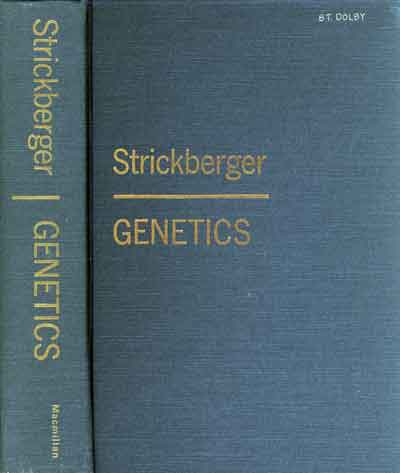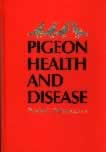


| Menu | |
| Antique (prior to 1930) | |
| o | Authors: a-h |
| o | Authors: i-z |
| Dovecote | |
| o | Authors: a-z |
| Doves | |
| o | All authors |
| Breed Specific | |
| o | Racing homers |
| o | Pigeons in wars |
| o | Other breeds |
| Curios | |
| o | All items |
| Fiction | |
| o | Authors: a-h |
| o | Authors: i-z |
| Foreign Language | |
| Non English | |
| General Interest | |
| o | Authors: a-h |
| o | Authors: i-z |
| Magazines | |
| o | APJ |
| o | Pigeon Debut |
| o | Pigeon Fancier |
| o | Purebred Pigeon |
| o | The Fancier |
| o | feathered World |
| o | Others English |
| o | Foreign |
| Medical - Genetic | |
| o | Authors: a-z |
| Miscellaneous | |
| o | All others |
| Contact |
|
| About us | |
| The Pigeoncote cares for lost and injured pigeon, and is a non culling pigeon refuge, located in Olympia, WA USA. We have been in continuous service since 1993. |
|

From Pigeons to People; Elizabeth Hall
From Pigeons to People displays the same clarity of thinking, readability, and accuracy that caused Why We Do What We Do to receive an Honorable Mention in the book' category of the 1974 National Media Awards of The American Psychological Foundation. 1974 National Media Awards of the American Psychological Foundation, Honorable Mention. "A straightforward, holding introduction to areas studied in modern psychology." Booklist "A very good overview of psychological processes and animal behavior clarified by descriptions of experimental research . . . includes chapters on motivation, emotions, learning, memory, thinking, and personality." "Lively, lucid, and learnable." Journal of Biological Psychology. |
|
| $16 1975 Very good hardback, with very good jacket. Former owner's stamp on FEP makes it very good rather than excellent.. | |
| $10 1975 Very good hardback, no dust jacket. | |
| Strickberger Genetics; Monroe W. Strickberger | |
 |
Very good reference book about genetics for those that wish to learn beyond just the genes relating to pigeons. This is a very large book of 868 pages |
Pigeon Health and Disease; David C. Tudor |
|
 |
Research conducted during the past several years has materially advanced
our knowledge and understanding of pigeon health and disease. The object
of this text is to provide pigeon fanciers, attendant veterinarians, and
research-oriented groups with factual information concerning pigeon diseases.
The text is organized to permit a clear understanding of each disease entity
together with present-day methods of control and/or prevention. Other basic
information on pigeon breeding is included to broaden the scope of the text.
The material presented is derived from the author's practical farm experience in earlier years, private practice, and day-to-day activities in the Avian Diagnostic Laboratory at Cook College, Rutgers University, where he served for 27 years as a research professor and teacher. Invaluable observations of other research personnel are included and documented to enhance the complete understanding of each subject. Additional un-cited references have been included to provide the reader with related information. The text is divided into five parts. The subheading format permits a complete discussion of each disease. References listed after each section enable further research on the part of interested investigators. Appendixes listing pathological and anatomical disease conditions, a glossary, and an index provide additional access to the terminology and disease information. The author wishes to express his deepest gratitude for the unlimited help and encouragement given by his wife, Emily. Artwork has been contributed by his daughter, Diane Louis. Inspiration for the publication stems from the memories of untiring efforts of devoted and loving parents and from the kindly and instructive suggestions of mentors F. R. Beaudette and C. B. Hudson. Published by Iowa State Univ |
| Keep Your Pigeons Flying: Leon F. Whitney | ||
 |
Leon Whitney's Keep Your Pigeons Flying is one of the first English language books that deal almost exclusively with the health and maintenance of pigeons. While he is a veterinarian, it is written in plain English with many drawings, diagrams and photographs to assist in clarifying the issue at hand. The first issue was published in 1961 at a time when some of the first good drugs became available. Some of the drugs are still in use, while others such as DDT have been removed. It seems obvious now that the best avenue against disease is prevention, and here is one area the book still shines bright. Chapters include the body, food, drugs, diseases by bacteria, viruses, fungi, protozoa, deficiency, parasites both internal and external, surgery, sanitation, enemies, and public health. An asset to any pigeon provider's library. | |
| Mini Dissection Guide to the Pigeon; Don Sherwood | |
 |
This mini guide was produced by Fisher Scientific and has a copyright of 1993 |
| Functional Morphology of the Tail Apparatus of the Pigeon; Julian J. Baumel | |
 |
115pp paperback |
| Origins and Excursions in Pigeon Genetics: W.F. Hollander | ||
 |
W. F. Hollander must be considered the father of pigeon genetics in the States. There were many that preceded him, but he alone pulled the science together for the pigeon breeder of today. It is interesting when reading his work how well it has withstood the test of time. Nearly all he postulated still rides as fact throughout the land. Pigeon breeders of the here and now as well as his contemporaries used his understanding of genetics presented in this, and his other works, to continue to shape and color the beautiful gems of pigeons we have with us today. | |
 |
This is one of a set under the name of Old Hand. The
introduction states that "I trust every fancier in the land will consider
that it is necessary for him to obtain a copy of this book and keep it by
him because this will be almost equivalent to having ' Old Hand' himself,
with his great store of knowledge, dwelling in one's own home, and always
at hand to solve an urgent problem. For there is no pigeon ailment or disease
which presents other than an urgent problem, calling for immediate action.
This book tells one how to diagnose the complaint and how to treat it for
best results. Of one thing I can be very sure and that is that sooner or
later the buyer of this book is going to live to be glad he came by it and
kept it handy." I certainly can't endorse that last notion, but it is certainly
a great piece of historical memorabilia that is very difficult to locate,
and is a keen insight into pigeon husbandry or lack there of.
Old hand is actually a very descriptive note; because at the time this book was printed medical knowledge had outpaced the remedies provided in it.. By 1966 the remedies would have been considered "old wives tales". Masquerading as medical advice the author presents philosophical argument about viewing an ill pigeon as biology rather than biography, denying that individual pigeons have value except as a part of the larger biology. His argument is that only those with soft minds can hold an opposite view rather than providing any compelling evidence. This argument and "proof" still pervades and divides the hobby |
| The Feeding System of the Pigeon; Gart Zweers | |
 |
Published in 1982, consisting of 108 pages. |
![]()